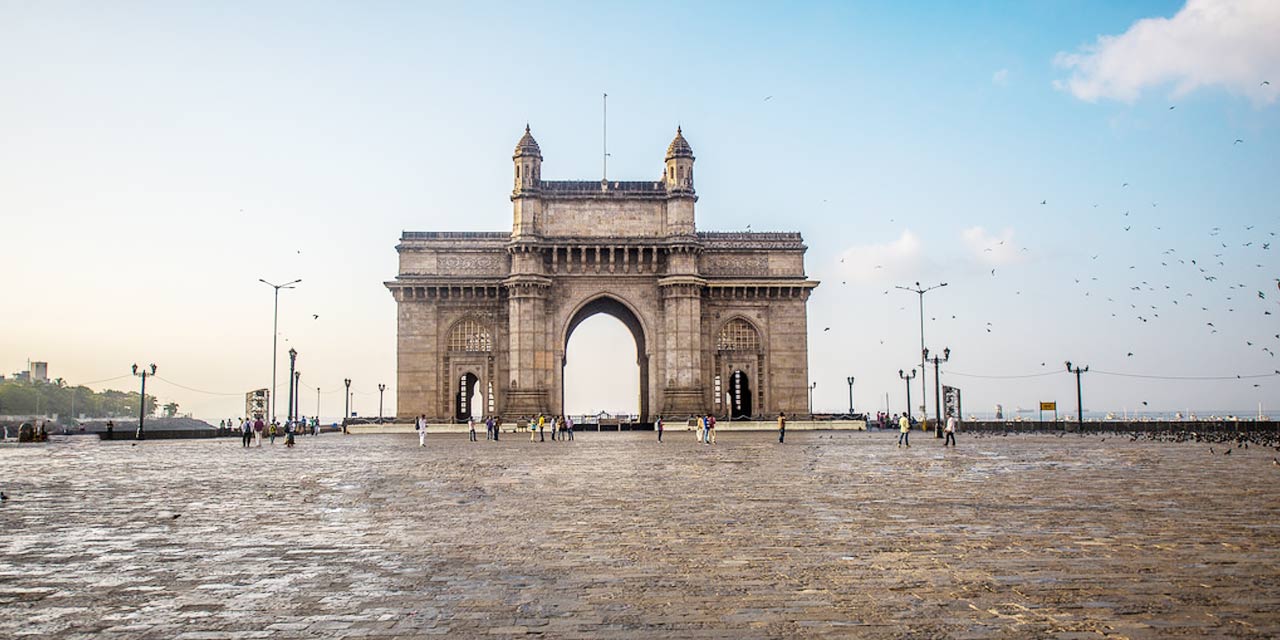
Architectural Background and Design
Inarguably The Gateway of India is embedded in the city of Mumbai, not only does it reside in the city, whenever the city is mentioned- the gateway springs to one’s imagination immediately. The monument is built out of glorious yellow basalt and reinforced concrete that was brought specially to Mumbai from Gwalior to get the build finished.
Most of the finishing products used in the gateway are rather exquisite and weren’t locally available during construction. It faces the Bombay Harbor, there are turrets on the structure’s four corners and its archway has steps that open into the Arabian sea.
George Wittet, a Scotsman and a profound architect was on the job and managed to emulate different styles and genres of architecture such as latticework and roman arches into the project successfully while keeping the architecture true to the contemporary 16th century builds.
Relevant to the time was also the Islamic elements of architecture and combined with the Indian architecture it is called the Indo-Saracenic style, which was used in the archway and detailing. The gateway has halls on either side with seating capacity for over 600 people.
Interestingly enough, due to the underestimation of costs, the government back then ran short of funds for the project and this led to the main complex being finished but the road leading up to it not even started- the archway this is at an angle to the road that now leads to it.
Historical Significance
The British Empire was known to host a mass assembly in its colonies, as a symbolic event marking the rise of a new emperor to the throne. All the way back in 1911, the third such event called an Imperial Durbar (Assembly) was held.
This one, in particular, was very significant as it was the only one a British Monarch would attend in person in India during the entirety of the British regime. Now, George V and Empress Mary had risen to power and as a show of power indeed they announced the assembly was to be held in December 1911 in Delhi. This was also the first of a Monarch’s own footsteps on Indian soil.
The Gateway of India was made to commemorate the occasion and by the day of the arrival of George V came (it had been only announced in February when he was to come in December), he only got to see a cardboard outline or a draft for the lack of a better word- of the gateway to be constructed.
The actual work would begin four years later in 1915 after the event in Delhi has already ended and the King and Queen safely returned to Britain. By 1919 the land for construction for the gateway was reclaimed and a sea wall at the Apollo Bunder (Harbor) was built.
The construction was finished finally by 1924, over 13 years later and was opened to the public as an attraction on the 24th of December, 1924.
The monument is a symbol of British power and absolute dominance over India in all walks of life at the peak of the British colonial era in India. Following the harrowing 26/11 terror attacks in 2008, the monument has become a sort of a prayer spot for Jews as Rabbi Holtzberg lost his life during the attack on Nirman House.
Tourism and Current Uses
The gateway is more of a tourism hotspot now than a symbol of colonial rule in India. It is the attraction, hundreds of thousands of Indian tourists flock together to visit and explore. The history backing it is intriguing, to say the least, it is a very in-your-face building that can’t possibly grab your attention if you pass it by and it does a great job of putting things in scale and perspective.
In some cases, this has had a rather negative impact on the gateway in the fact that people taint it with writings and litter which is not something we should take lightly- given this gateway is a National Heritage site.
In 2020, there were protests held at the gateway by the name of occupying the gateway movement in response to the Pulwama Terror Attacks and the related authorities had to move the protestors into Azad Maidan in Mumbai in order to improve the clogging traffic flow.
